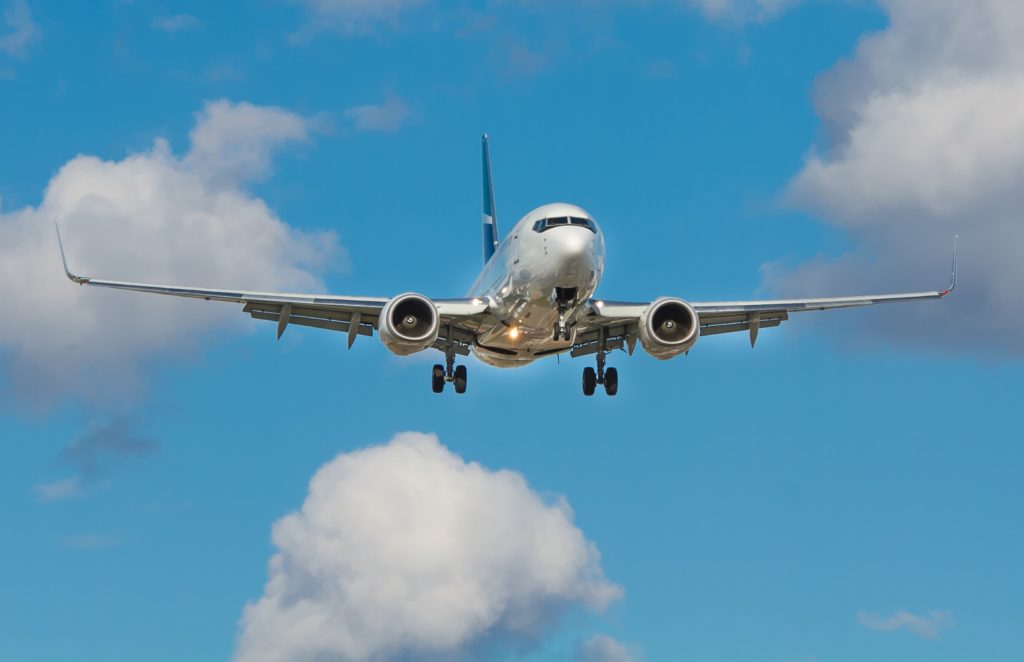If you’ve ever flown between New York and California (or any other long flight) you may have noticed something funny:
Flying West-to-East (California to New York) is about an hour faster than flying East-to-West (New York to California).
It’s logical to think that going from Point A to Point B will take the same amount of time as Point B to Point A, so what exactly is going on here?
In this post, you’ll learn what exactly causes the east/west difference in travel time as well as some examples.

The Earth’s Rotation & Jet Streams

High up in the sky, there are “rivers of air” called jet streams which are fast-flowing, narrow air currents found in the Earth’s atmosphere that push west to east.
The jet stream is created by the difference in temperature between the colder polar air and the warmer tropical air, and it tends to blow from west to east at high altitudes.
When you fly from west to east, you are able to take advantage of the jet stream and “surf” on the tailwind it provides. This can help to reduce the time it takes to complete the journey, and it is one of the reasons why flying from west to east is generally shorter than flying from east to west.
For another example: According to FlightStats, a flight from New York to London flying west to east typically takes around 7 hours and 20 minutes.
On the other hand, if you fly from east to west, you will be “fighting against” the jet stream, which can increase your flight time.
A flight from London to New York flying east to west typically takes around 8 hours and 10 minutes, which is around 50 minutes longer than the west-to-east flight.
To give an example of the speed, there are some polar jetstreams that add 100mph+ tailwind to your flight, so it’s easy to see how that could save time.
But It’s not always shorter
On the other hand, there are some cases where flying from east to west may be shorter. This is because the jet stream is not a constant wind and its strength and direction can vary across locations
Additionally, other factors such as the distance between the two destinations, the route that the plane takes, and the presence of land masses and oceans can also affect the length of a flight.
Overall, the Earth’s rotation and the jet stream can have a significant impact on the length of a flight, and flying from west to east is generally shorter than flying from east to west because of these factors. However, there are also other factors that can affect flight times, and it’s always a good idea to check the specific flight times and routes for your trip to determine the best option.
You can generally see flight times when booking your flights through Google flights or the airline’s websites. And generally before takeoff, the plane’s pilot will announce the expected flight time in the air.
Shouldn’t it take longer going west to east since the earth is rotating counterclockwise?

This is a question that puzzled me when I initially started looking into this.
Since the earth is spinning counterclockwise, that means that when you’re flying east, your destination city is also moving east at the same time, pushing it further away. So why is it faster?
Here’s what I ultimately found:
The Earth does rotate from west to east, and you’d be right to think that an eastward point on the Earth’s surface is also moving eastward.
However, this is already accounted for in the way we perceive motion on the Earth’s surface.
When a plane takes off, it’s already moving with the Earth’s rotation because it started on the ground, which is moving with the Earth. So the plane’s initial speed and direction are influenced by the Earth’s rotation.
Think of it this way: if you were on a moving walkway (like the ones in airports) and threw a ball straight up, it wouldn’t land behind you even though the walkway is moving; it’d land back in your hand because both you and the ball were already moving with the walkway when you threw it.
Similarly, when a plane flies east, it’s not starting from a standstill in relation to the Earth’s rotation. It’s already moving with the Earth.
The key difference in flight times when flying east versus west is the influence of the jet stream, not the Earth’s rotation.
Wrapping up
Although there are always exceptions due to weather and geography considerations, in my experience, flying west to east is almost always faster than east to west and this will likely hold true for the majority of the long-haul flights you take.
